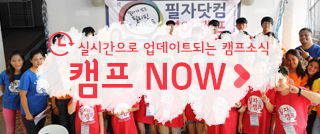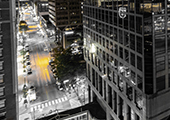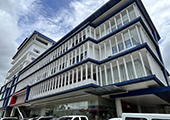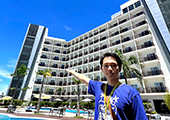
-
МјРЇСІИёСЖШИМі
-
 PASIGARBO SA SUGBO (Festival of Festivals)
PASIGARBO SA SUGBO (Festival of Festivals) 12,760
12,760 -
 Flores De Mayo in the Philippines
Flores De Mayo in the Philippines 12,270
12,270 -
 Ibalong Festival
Ibalong Festival 11,695
11,695 -
 Ati-atihan Festival11,572
Ati-atihan Festival11,572 -
 Gayon Bicol Festival11,536
Gayon Bicol Festival11,536 -
 MAGAYON FESTIVAL11,438
MAGAYON FESTIVAL11,438 -
 CARACOL FESTIVAL11,013
CARACOL FESTIVAL11,013 -
 LANZONES FESTIVAL10,650
LANZONES FESTIVAL10,650 -
 PINYASAN FESTIVAL in CAMARINES NORTE10,645
PINYASAN FESTIVAL in CAMARINES NORTE10,645 -
 Lami-lamihan Festival10,320
Lami-lamihan Festival10,320
HISTORY
The Sinulog festival is one of the grandest, most distinguished and most colorful festivals in the Philippines. The major festival is held each year on the third Sunday of January in Cebu City to honor the Santo Niño, or the child Jesus, who used to be the patron saint of the whole province of Cebu (since in the Catholic faith Jesus is not a saint, but God). It is fundamentally a dance ritual which remembers the Filipino people's pagan past and their recognition of Christianity.


The festival features some the country's most colorful displays of ceremony and pageantry: participants clothe in bright-colored costumes dance to the rhythm of drums and native gongs. The streets are generally lined with vendors and pedestrians all wanting to witness the street-dancing.


BACKGROUND
'Sinulog' comes from the Cebuano adverb sulog which is "like water current movement," which proficiently describes the forward-backward movement of the Sinulog dance. Traditionally, the dance consists of two steps forward and one step backward, done to the sound of the drums.

The dance is classified into Sinulog-base, Free-Interpretation, and recently a Latin Category, which most people have argued that it had nothing to do with Sinulog tradition. Candle vendors at the Basilica continue to perform the traditional version of the dance when lighting a candle for the customer, usually accompanied by songs in the native language.

THE FLUVIAL PARADE
The fluvial procession starts very early in the morning. This momentuous event, considered the biggest in the country, is attended by thousands of devotees from across the country. As the NiñoЁЏs boat sails for Cebu City through the Mactan channel, His devotees throw flowers, light candles, and dance the Sinug for penance, petition, and thanksgiving.




- ЁЄ
- ЁЄ
- ЁЄSalapan Festival
- ЁЄEmpanada Festival (Batac City)
- ЁЄPADUL-ONG FESTIVAL
- ЁЄKaumahan Festival in Barili
- ЁЄKAGASANGAN FESTIVAL
- ЁЄLalin Festival in Asturias
- ЁЄTinabuay Festival
- ЁЄGayon Bicol Festival
- ЁЄPINYASAN FESTIVAL in CAMARINES
- ЁЄMAGAYON FESTIVAL
- ЁЄBANAUAN FESTIVAL (BARANGAY.GUA
- ЁЄThe Tuna Festival in Gensan
- ЁЄPINTOS FESTIVAL BOGO CITY, CEB



- ЁЄ
- ЁЄ
- ЁЄ
- ЁЄCEBU WESTOWN LAGOON
- ЁЄGREEN LAGOON, COMPOSTELA
- ЁЄCALLAO CAVE
- ЁЄMOUNT PINATUBO IN PHILIPPINES
- ЁЄBATAN ISLAND in Batanes.
- ЁЄCALAGUAS ISLAND, CAMARINES NOR
- ЁЄAGHO ISLAND
- ЁЄCARAMOAN ISLAND IN CAMARINES S
- ЁЄSAMBAWAN ISLAND
- ЁЄPLACES TO VISIT IN LANAO DEL N
- ЁЄPLACES TO VISIT IN ZAMBOANGA C
- ЁЄPlaces to visit in Rizal Provi













 ЧЪРкДхФФ ОпАЃЛѓДу ПРЧТ
ЧЪРкДхФФ ОпАЃЛѓДу ПРЧТ 12ГтПЌМг МвКёРкИИСЗ 1РЇ
12ГтПЌМг МвКёРкИИСЗ 1РЇ
 ГЛАд ИТДТ ОюЧаПј УЃБт
ГЛАд ИТДТ ОюЧаПј УЃБт
 ИЎОѓ ЧаБГ ЙцЙЎБт
ИЎОѓ ЧаБГ ЙцЙЎБт
 СжИЛПЁ ГЛАЁ ОЕ КёПыРК?
СжИЛПЁ ГЛАЁ ОЕ КёПыРК? УжАэАЁМККё РЬКЅЦЎ СёБтБт
УжАэАЁМККё РЬКЅЦЎ СёБтБт
 ЧіСіПЁМЕЕ ЧЪРкДхФФ!
ЧіСіПЁМЕЕ ЧЪРкДхФФ! ЧіСіПЁМ АЁДЩЧб
ЧіСіПЁМ АЁДЩЧб









 ЧЪРк ЦЏБо Ч§ХУ! ФСНУОюСі МКёНК
ЧЪРк ЦЏБо Ч§ХУ! ФСНУОюСі МКёНК


































